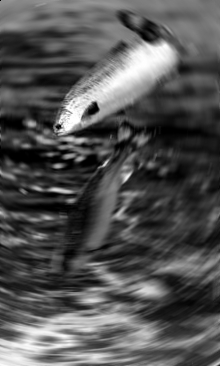Fish pens set for deeper sea
 Australian engineers have designed a lightweight fish pen to move farms to deeper seas.
Australian engineers have designed a lightweight fish pen to move farms to deeper seas.
Competition for space in sheltered nearshore waters is forcing the industry to move further offshore, prompting the Blue Economy Cooperative Research Centre to commission the project.
“Our design will help fish farms meet a growing demand for seafood in an affordable and sustainable way,” Professor Wang said.
“Moving to deeper and cooler waters is great for the ocean environment and for fish health and welfare but if a pen is too flimsy, large ocean waves during storms would quickly tear it apart.
“This solution - named SeaFisher - bundles high-density polyethylene (HDPE) pipes together with custom brackets and connectors to create a frame so we have strength in a lightweight structure.
“To keep the pen and the fish safe, water pumps fill the pipes so it can be submerged in stormy weather and when the danger has passed, that ballast can be emptied so the pen rises to the surface again.
“A front shield diverts debris around the pen while smooth, reinforced PET plastic netting keeps predators out.”
The pen is estimated to initially cost around $6 million, a fraction of the cost of other, more rigid offshore fish farming structures being used in the northern hemisphere.
Professor Wang says modelling shows SeaFisher could grow ten times the fish of the other offshore pens on the market, some of which cost up to $180 million dollars.
“This is a modular system of 20 metre cubic cages, linked two abreast to enable easy access for monitoring, feeding, and harvesting the fish stock,” he said.
“We estimate that each cubic cage could comfortably house 24,000 fully grown, 5-kilogram finfish.
“It could be used to farm different finfish species next to each other and be adapted to grow seaweed, utilising waste from the fish pens to fertilise the plant crop.
“By mooring the pen with a chain attached to a single suction anchor that allows it to move with water currents, the impact on the ocean floor is minimal.”
The design has been patented and scale-models will now be tested before prototypes are built.
The project also involves Professor Joerg Baumeister at Griffith University, researchers at the University of Tasmania and industry partners.
The research paper is published in the Journal of Marine Science and Engineering.








 Print
Print